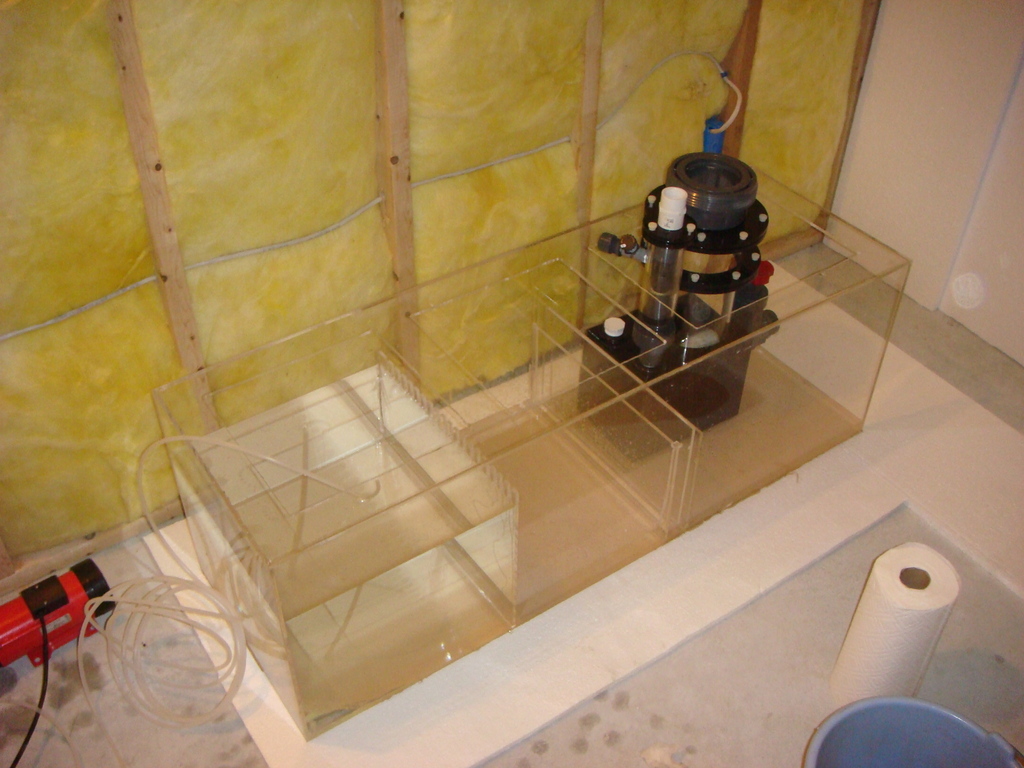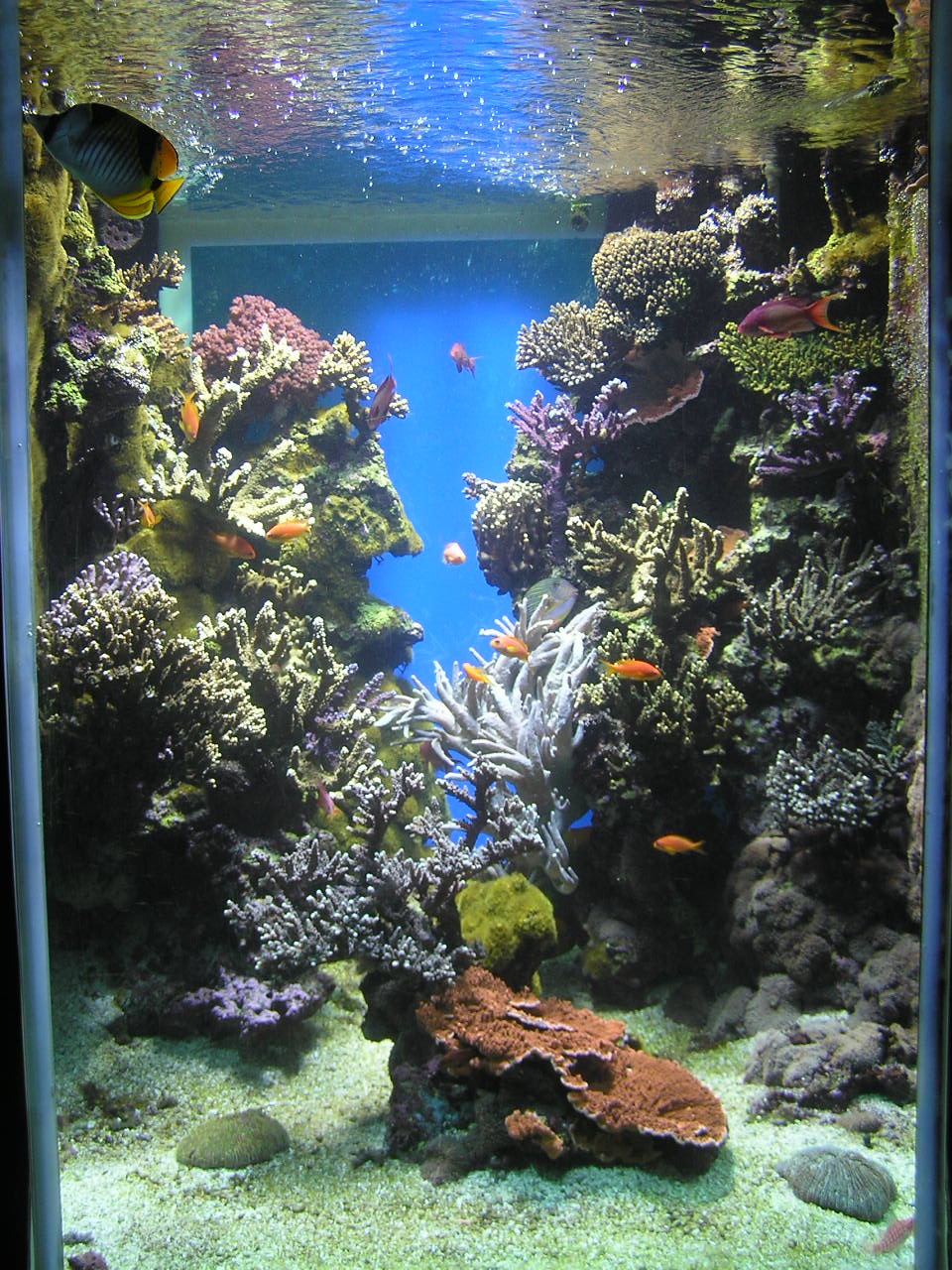|
Sump
A sump is a low space that collects often undesirable liquids such as water or chemicals. A sump can also be an infiltration basin used to manage surface runoff water and recharge underground aquifers. Sump can also refer to an area in a cave where an underground flow of water exits the cave into the earth. Examples One common example of a sump is the lowest point in a basement, into which flows water that seeps in from outside. If this is a regular problem, a sump pump that moves the water outside of the house may be used. Another example is the oil pan of an engine. The oil is used to lubricate the engine's moving parts and it pools in a reservoir known as its sump, at the bottom of the engine. Use of a sump requires the engine to be mounted slightly higher to make space for it. Often though, oil in the sump can slosh during hard cornering, starving the oil pump. For these reasons, racing motorcycles and piston aircraft engines are " dry sumped" using scavenge pumps and ... [...More Info...] [...Related Items...] OR: [Wikipedia] [Google] [Baidu] |
Dry Sump
A dry-sump system is a method to manage the lubricating motor oil in four-stroke and large two-stroke piston driven internal combustion engines. The dry-sump system uses two or more oil pumps and a separate oil reservoir, as opposed to a conventional wet-sump system, which uses only the main sump (U.S.: oil pan) below the engine and a single pump. A dry-sump engine requires a pressure relief valve to regulate negative pressure inside the engine, so internal seals are not inverted. Dry-sumps are common on larger diesel engines such as those used in ships, as well as gasoline engines used in racing cars, aerobatic aircraft, high-performance personal watercraft and motorcycles. Dry sump lubrication may be chosen for these applications due to increased reliability, oil capacity, reduction of oil starvation under high g-loads and/or other technical or performance reasons. Dry sump systems may not be suitable for all applications due to increased cost, complexity, and/or bulk, ... [...More Info...] [...Related Items...] OR: [Wikipedia] [Google] [Baidu] |
Sump (cave)
A sump, or siphon, is a passage in a cave that is submerged under water. A sump may be static, with no inward or outward flow, or active, with continuous through-flow. Static sumps may also be connected underwater to active stream passage. When short in length, a sump may be called a duck, however this can also refer to a section or passage with some (minimal) airspace above the water. Depending on hydrological factors specific to a cave – such as the sea tide, changes in river A river is a natural flowing watercourse, usually freshwater Fresh water or freshwater is any naturally occurring liquid or frozen water containing low concentrations of dissolved salts and other total dissolved solids. Although the ... flow, or the relationship with the local water table – sumps and ducks may fluctuate in water level and depth (and sometimes in length, due to the shape of adjacent passage). Exploration past a sump Diving Short sumps may be passed simply by hold ... [...More Info...] [...Related Items...] OR: [Wikipedia] [Google] [Baidu] |
Sump (aquarium)
In fishkeeping, a sump is an accessory aquarium tank in which mechanical equipment is kept. A remote sump allows for a clutter-free display tank. It is found mainly in a reef aquarium or marine aquarium. The sump sits below the main tank, and is used as a filter, as well as a holding place for unsightly, miscellaneous equipment such as protein skimmers, calcium reactors, and heaters. The main advantage of having a sump plumbed into an aquarium is the increase of water volume in the system, making it more stable and less prone to fluctuations of pH and salinity Salinity () is the saltiness or amount of salt dissolved in a body of water, called saline water (see also soil salinity). It is usually measured in g/L or g/kg (grams of salt per liter/kilogram of water; the latter is dimensionless and equal ..., and also mitigating the effects of nutrient buildup or the unintentional introduction of foreign substances. In addition, some sumps have a compartment that can be con ... [...More Info...] [...Related Items...] OR: [Wikipedia] [Google] [Baidu] |
Oil Pump (internal Combustion Engine)
The oil pump is an internal combustion engine part that circulates engine oil under pressure to the rotating bearings, the sliding pistons and the camshaft of the engine. This lubricates the bearings, allows the use of higher-capacity fluid bearings and also assists in cooling the engine. As well as its primary purpose for lubrication, pressurized oil is increasingly used as a hydraulic fluid to power small actuators. One of the first notable uses in this way was for hydraulic tappets in camshaft and valve actuation. Increasingly common recent uses may include the tensioner for a timing belt or variators for variable valve timing systems. Pumps The type of pump used varies. Gear pumps trochoid pumps and vane pumps are all commonly used. Plunger pumps have been used in the past, but these are now only used rarely, for small engines. To avoid the need for priming, the pump is always mounted low-down, either submerged or around the level of the oil in the sump. A sh ... [...More Info...] [...Related Items...] OR: [Wikipedia] [Google] [Baidu] |
Reef Aquarium
A reef aquarium or reef tank is a marine aquarium that prominently displays live corals and other marine invertebrates as well as fish that play a role in maintaining the tropical coral reef environment. A reef aquarium requires appropriately intense lighting, turbulent water movement, and more stable water chemistry than fish-only marine aquaria, and careful consideration is given to which reef animals are appropriate and compatible with each other. Components Reef aquariums consist of a number of components, in addition to the livestock, including: *Display tank: The primary tank in which the livestock are kept and shown. *Stand: A stand allows for placement of the display tank at eye level and provides space for storage of the accessory components. *Sump: An accessory tank in which mechanical equipment is kept. A remote sump allows for a clutter-free display tank. *Refugium: An accessory tank dedicated to the cultivation of beneficial macroalgae and microflora/fauna. The ... [...More Info...] [...Related Items...] OR: [Wikipedia] [Google] [Baidu] |
Bilge
The bilge of a ship or boat is the part of the hull that would rest on the ground if the vessel were unsupported by water. The "turn of the bilge" is the transition from the bottom of a hull to the sides of a hull. Internally, the bilges (usually used in the plural in this context) is the lowest compartment on a ship or seaplane, on either side of the keel and (in a traditional wooden vessel) between the floors. The first known use of the word is from 1513. Bilge water The word is sometimes also used to describe the water that collects in this area. Water that does not drain off the side of the deck or through a hole in the hull, typically via a scupper, drains down into the ship into the bilge. This water may be from rough seas, rain, leaks in the hull or stuffing box, or other interior spillage. The collected water must be pumped out to prevent the bilge from becoming too full and threatening to sink the ship. Bilge water can be found aboard almost every vessel. Dependi ... [...More Info...] [...Related Items...] OR: [Wikipedia] [Google] [Baidu] |
Infiltration Basin
An infiltration basin (or recharge basin) is a form of engineered sump or percolation pond that is used to manage stormwater runoff, prevent flooding and downstream erosion, and improve water quality in an adjacent river, stream, lake or bay. It is essentially a shallow artificial pond that is designed to infiltrate stormwater through permeable soils into the groundwater aquifer. Infiltration basins do not release water except by infiltration, evaporation or emergency overflow during flood conditions. It is distinguished from a detention basin, sometimes called a dry pond, which is designed to discharge to a downstream water body (although it may incidentally infiltrate some of its volume to groundwater); and from a retention basin, which is designed to include a permanent pool of water. Design considerations Infiltration basins must be carefully designed to infiltrate the soil on a given site at a rate that will not cause flooding. They may be less effective in areas with: * ... [...More Info...] [...Related Items...] OR: [Wikipedia] [Google] [Baidu] |
Snorkeling
Snorkeling ( British and Commonwealth English spelling: snorkelling) is the practice of swimming on or through a body of water while equipped with a diving mask, a shaped breathing tube called a snorkel, and usually swimfins. In cooler waters, a wetsuit may also be worn. Use of this equipment allows the snorkeler to observe underwater attractions for extended periods with relatively little effort and to breathe while face-down at the surface. Snorkeling is a popular recreational activity, particularly at tropical resort locations. It provides the opportunity to observe underwater life in a natural setting without the complicated equipment and training required for scuba diving. It appeals to all ages because of how little effort is involved and is the basis of the two surface disciplines of the underwater sport of finswimming. Snorkeling is also used by scuba divers when on the surface, in underwater sports such as underwater hockey and underwater rugby, and as part o ... [...More Info...] [...Related Items...] OR: [Wikipedia] [Google] [Baidu] |
Cosmology
Cosmology () is a branch of physics and metaphysics dealing with the nature of the universe. The term ''cosmology'' was first used in English in 1656 in Thomas Blount's ''Glossographia'', and in 1731 taken up in Latin by German philosopher Christian Wolff, in ''Cosmologia Generalis''. Religious or mythological cosmology is a body of beliefs based on mythological, religious, and esoteric literature and traditions of creation myths and eschatology. In the science of astronomy it is concerned with the study of the chronology of the universe. Physical cosmology is the study of the observable universe's origin, its large-scale structures and dynamics, and the ultimate fate of the universe, including the laws of science that govern these areas. It is investigated by scientists, such as astronomers and physicists, as well as philosophers, such as metaphysicians, philosophers of physics, and philosophers of space and time. Because of this shared scope with philosoph ... [...More Info...] [...Related Items...] OR: [Wikipedia] [Google] [Baidu] |
Grenade
A grenade is an explosive weapon typically thrown by hand (also called hand grenade), but can also refer to a shell (explosive projectile) shot from the muzzle of a rifle (as a rifle grenade) or a grenade launcher. A modern hand grenade generally consists of an explosive charge ("filler"), a detonator mechanism, an internal striker to trigger the detonator, and a safety lever secured by a cotter pin. The user removes the safety pin before throwing, and once the grenade leaves the hand the safety lever gets released, allowing the striker to trigger a primer that ignites a fuze (sometimes called the delay element), which burns down to the detonator and explodes the main charge. Grenades work by dispersing fragments ( fragmentation grenades), shockwaves ( high-explosive, anti-tank and stun grenades), chemical aerosols ( smoke and gas grenades) or fire ( incendiary grenades). Fragmentation grenades ("frags") are probably the most common in modern armies, and when the ... [...More Info...] [...Related Items...] OR: [Wikipedia] [Google] [Baidu] |

.jpg)

_(29856364125).jpg)


